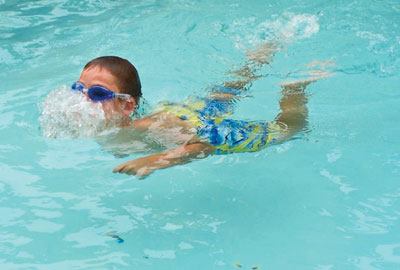Swimmer’s ear costs nearly $500 million in annual health care costs and accounts for close to 2.4 million in doctor visits annually, according to a recent report from the Centers for Disease Control and Prevention in Atlanta.
“Most people think of swimmer’s ear as a mild condition that quickly goes away, but this common infection is responsible for millions of illnesses and substantial medical costs each year,” said Michael Beach, Ph.D., CDC’s associate director for healthy water, in a press release. “By taking simple steps before and after swimming or coming in contact with water, people can greatly reduce their risk of this painful infection.”
According to the CDC, in 2007, 1 in 123 Americans went to the doctor for swimmer’s ear. Between 2003 and 2007, rates of doctor’s visits for swimmer’s ear were highest in children between the ages of 5 and 14 years. However, more than half of the reported infections occurred in adults over age 20. People living in the South had the highest regional rate of swimmer’s ear. Cases peaked during the summer swimming season, with 44 percent of cases occurring in June, July or August.
Swimmer’s ear, a completely preventable inflammation of the inner ear, is generally caused by a bacterial infection. It was the focus of this year’s annual Recreational Water Awareness Week. It stands out from other recreational water illnesses because it often causes intense ear pain so those who are affected will typically see a doctor. With other recreational water illnesses such as cryptosporidium, which causes diarrhea and stomach issue, not everyone will see a doctor.
“When we looked at what’s been published in terms of the data, we discovered that it’s a bigger problem that we thought it was,” said Michele Hlavsa, an epidemiologist for CDC’s Healthy Swimming, Waterbourne Disease Prevention branch.
Between swimmer’s ear and other waterborne illnesses such as crypto, the U.S. spends “hundreds of millions of dollars on healthcare costs for illnesses caused by germs transmitted by water (both recreational and drinking water),”according to Hlavsa.
That number can be reduced if pool operators vigilantly maintain good water quality.
“By maintaining good chlorine and pH levels you’re at decreased risk of spreading germs in the water,” she adds.
Operators can also provide patrons with swimmer’s ear prevention tips, available on the CDC’s Healthy Swimming Website.
To prevent swimmer’s ear the CDC recommends that swimmers keep their ears as dry as possible by using earplugs or bathing caps. Those prone to the condition can consult their physician about using alcohol-based ear drops.



